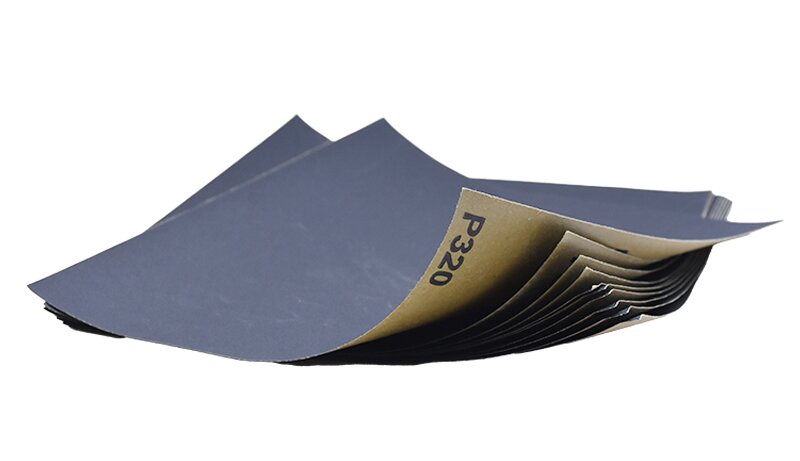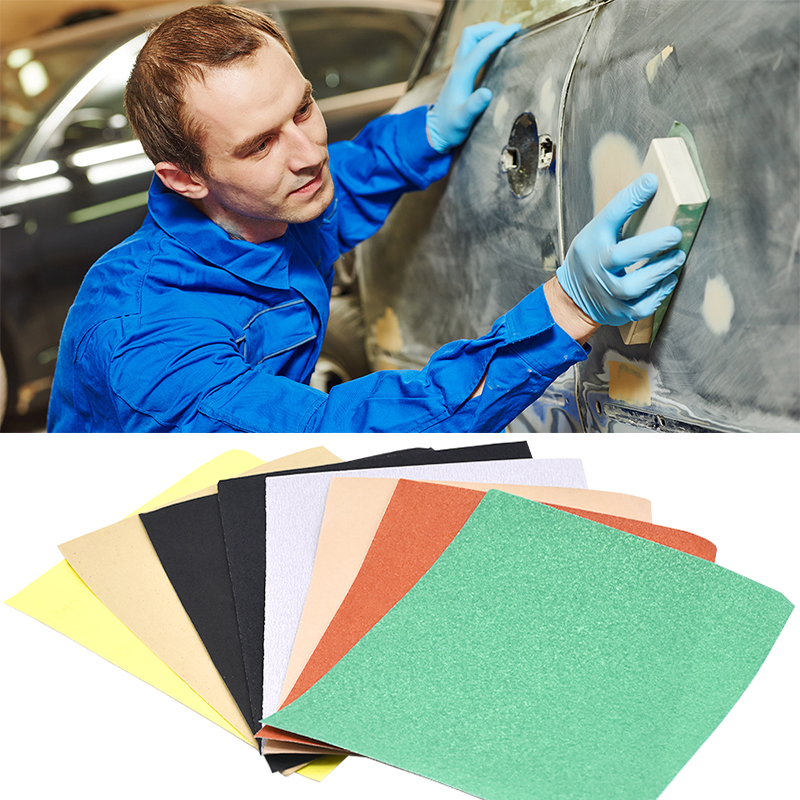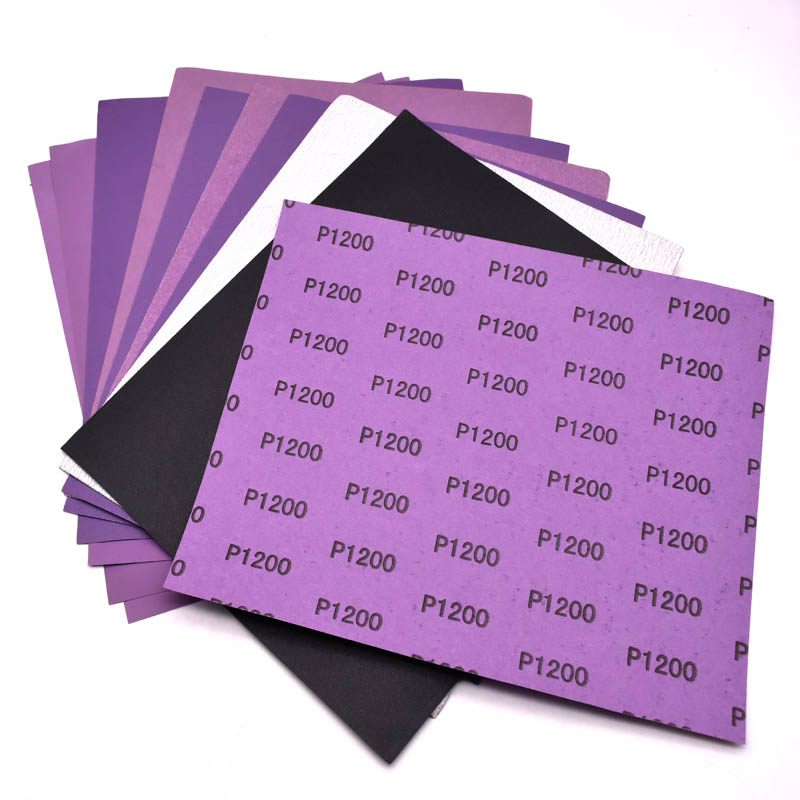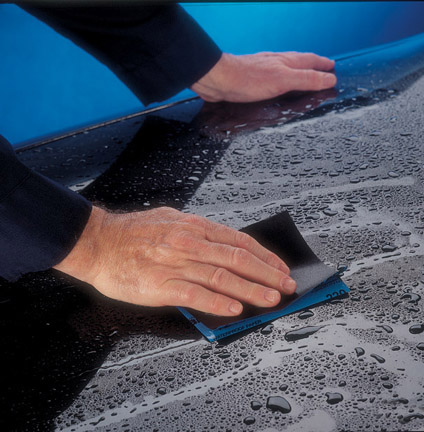Water sandpaper and dry sandpaper differ significantly in various aspects, including their materials, usage methods, grinding effects, application fields, and product characteristics.When choosing which sandpaper to use, a reasonable choice should be made according to the specific grinding needs and working environment.

Water Sandpaper: Water sandpaper typically uses water-resistant latex paper or waterproof kraft paper as its base material, with various resins as the binder to firmly adhere alumina abrasive grains or silicon carbide abrasive particles onto the base. The gaps between the abrasive grains are relatively small, producing finer powder during grinding.
Dry Sandpaper: Dry sandpaper, on the other hand, uses synthetic resin as the binder to adhere silicon carbide abrasive particles onto latex, which may also be coated with an antistatic layer. The gaps between the abrasive particles are larger, allowing larger fragments to fall off during grinding.

Water Sandpaper: Water sandpaper is typically used in conjunction with water, which helps flush away the powder generated during grinding, preventing clogging of the sandpaper surface and maintaining its grinding effectiveness. Using water sandpaper dry can lead to clogging of the gaps between abrasive grains, resulting in a smoother surface but reduced effectiveness.
Dry Sandpaper: Dry sandpaper does not require water and is designed for use without it. The larger gaps between abrasive particles allow fragments to naturally fall off, minimizing clogging.
Water Sandpaper: Water sandpaper grinds more slowly but achieves a smoother finish. Finer grits of water sandpaper grind even slower but result in an even smoother surface.
Dry Sandpaper: Dry sandpaper grinds faster but produces a relatively rougher finish. Coarser grits of dry sandpaper grind faster and result in a rougher surface.

Water Sandpaper: Water sandpaper is particularly suitable for high-precision polishing applications, such as the grinding of high-end paint finishes and the polishing of metal parts.
Dry Sandpaper: Dry sandpaper is widely used in furniture and decoration industries, especially during the rough grinding stage. Its high grinding efficiency and resistance to clogging make it ideal for processing rough surfaces, including metal grinding, redwood furniture grinding, paint grinding, and wall grinding.

Water Sandpaper: Water sandpaper offers advantages such as dust-free grinding with water, high polishing quality, and long sandpaper lifespan. Fine-grit water sandpaper is cost-effective, relatively inexpensive, and versatile.
Dry Sandpaper: Dry sandpaper excels in its high grinding efficiency and resistance to clogging. However, in applications requiring high-precision polishing, its grinding effect may not match that of water sandpaper.
ADD:
No. 1003 Building 9, Henan E-commerce Industrial Park, High-tech Zone, Zhongyuan District, Zhengzhou, ChinaTEL/FAX:
+8619937510087WhatsApp:
+8619937510087Email:
info@yihongabrasives.com




PRODUCT
FRIENDS LINKS
Quick consulting
Copyright ©Jia County Yihong Abrasives Co.,Ltd All Rights Reserved. Technical Support By Yihong Century Network Technology Co., Ltd. Sitemap

Wechat Service